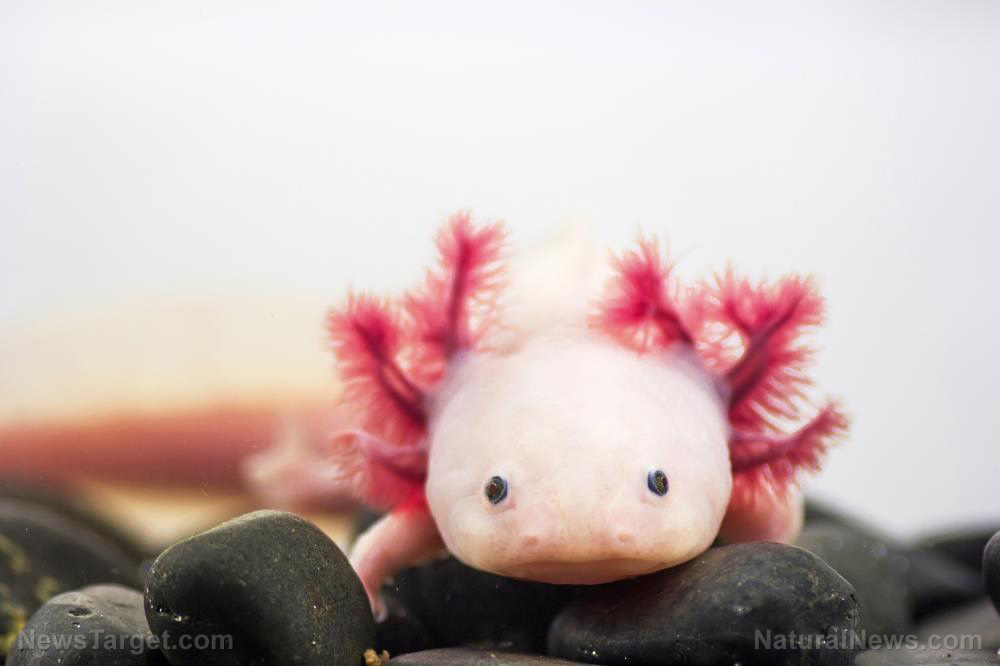Shorebird breaks record for non-stop flight after flying from Alaska to New Zealand
10/23/2020 / By Virgilio Marin

A bar-tailed godwit breaks the world record for the longest shorebird flight after flying 75,000 miles nonstop. The male bird, which was named “4BBRW” for the blue, red and white rings on its legs, set off from Alaska on Sept. 16. It traveled eleven consecutive days before arriving in New Zealand.
Scientists with the Global Flyway Network, a group of researchers who monitor migratory shorebirds, tracked the bird’s progress using the satellite tag on its back. The tag was attached last year by avian conservationists who caught the bird in the Firth of Thames in New Zealand.
Bar-tailed godwits are known to undertake impressive nonstop flights between Alaska and New Zealand. The previous record-holder, a female bar-tailed godwit, flew 7,145 miles in nine days.
Bar-tailed godwit’s record-breaking journey
Before beginning its flight south, the bird spent a couple of months feeding in Alaska’s mudflats. Birds pack on weight to prepare themselves for migration. Bar-tailed godwits, however, could double in size and at the same time shrink its internal organs for a lighter load.
Once ready for migration, the bird flew across the Pacific Ocean and landed in a bay near Auckland. The scientists believe that the flight got prolonged due to strong easterly winds, which pushed the bird toward Australia.
They initially recorded a point-to-point flight spanning 7,987 miles. But after accounting for rounding errors, they said that the bird likely traveled 7,581 miles, occasionally flying as fast as 55 miles per hour. It didn’t stop for a layover, though the team wasn’t certain whether it slept while flying or was awake all throughout the nonstop journey.
“They have an incredibly efficient fuel-to-energy rate,” said Jesse Conklin, who is part of the Global Flyway Network. “They are designed like a jet fighter. Long, pointed wings and a really sleek design, which gives them a lot of aerodynamic potential.”
4BBRW was among the 20 bar-tailed godwits caught and tagged by the Pukorokoro Miranda Shorebird Center, a bird-watching facility in New Zealand. The birds are expected to leave for Asia in March, where it will feed for a month before flying back to Alaska.
The return of bar-tailed godwits is highly anticipated by many, not just wildlife conservationists. It’s also deemed culturally significant by the Maori, the indigenous Polynesian people of New Zealand. The Maori considers the birds, which they call “kuaka,” as harbingers of good fortune.
Impressive avian feats
Another bar-tailed godwit, 4BWWY, demonstrated her kind’s excellent navigational skills after getting windswept toward New Caledonia, an island east of Australia.
It’s easy to get lost in the Pacific with the vast, featureless seascape. But this bar-tailed godwit was able to find her way to Cape Reinga, the northwesternmost tip of New Zealand. After several turns, she eventually landed in Pukorokoro Miranda on Sept. 21. The bird completed a 9-day flight spanning over 7,200 miles. (Related: Birds can sense extreme weather events and storms more than 24 hours in advance.)
Meanwhile, a 2016 study found that the common swift can stay in the air for 10 consecutive months. Researchers attached tiny backpacks to common swifts to record their movements over the course of two years. They found that three of the birds never landed until the end of the 10-month flight. Even those who stopped to rest still spent 99 percent of their time in the air.
“That’s quite amazing, I think, that the bird can remain airborne for such a long time,” said lead researcher Anders Hedenstrom of Lund University in Sweden.
Read more amazing animal feats at Ecology.news.
Sources include:
Tagged Under: animal conservation, bar-tailed godwit, bird migration, birds, cool science, Ecology, environment, shorebirds, wildlife
RECENT NEWS & ARTICLES
COPYRIGHT © 2017 REAL SCIENCE NEWS




















